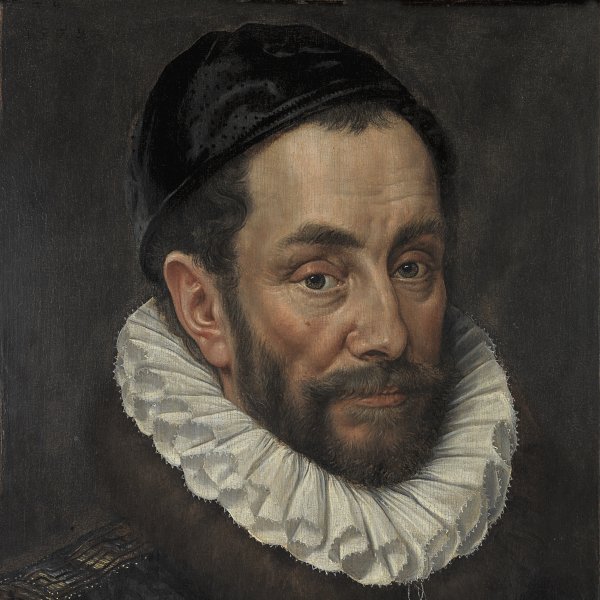Adriaen Thomasz. Key
Antwerp (?), ca. 1544-after 1589
Little is known of Key, who was a painter and designer of woodcuts. His origins are uncertain although the fact that he shares a surname with the painter Willem Key has led to the assumption that Adriaen may have been Willem’s nephew, rather than a distant relative. Whatever the case we know that Adriaen trained with Willem Key, from whom he could simply have taken his name. He is registered in the guild of Saint Luke in Antwerp in 1568 and his first surviving works date from 1572 onwards. In 1585, following the Spanish occupation of the city led by Alessandro Farnese, Duke of Parma, Key was marked down as a Calvinist, although he did not flee the city and continued to work there over the following years. This is evident from guild documents, which state that he had pupils in his charge in 1582 and 1588, and that in 1589 his payments to the guild were up to date. From that year onwards, however, Key’s name disappears from the records and it is not known whether he died or left Antwerp.
Over his lengthy career Key executed a sizeable number of altarpieces for different churches in Antwerp, among them one for the high altar of the Franciscan church. The few examples of such works reveal the marked influence of his teacher Willem Key. Adriaen Key also produced woodcuts in the style of Frans Floris, but he was primarily noted as a portraitist. Among Key’s most important paintings is that of William the Silent (Rijksmuseum, Amsterdam), which depicts William of Orange, Count of Nassau and leader of the Dutch independence movement. Several versions of this work are known. Key’s early portraits are notable for a marked realism while his late ones focus on capturing the status and social rank of the sitters, probably influenced by Antonis Mor.
Over his lengthy career Key executed a sizeable number of altarpieces for different churches in Antwerp, among them one for the high altar of the Franciscan church. The few examples of such works reveal the marked influence of his teacher Willem Key. Adriaen Key also produced woodcuts in the style of Frans Floris, but he was primarily noted as a portraitist. Among Key’s most important paintings is that of William the Silent (Rijksmuseum, Amsterdam), which depicts William of Orange, Count of Nassau and leader of the Dutch independence movement. Several versions of this work are known. Key’s early portraits are notable for a marked realism while his late ones focus on capturing the status and social rank of the sitters, probably influenced by Antonis Mor.





